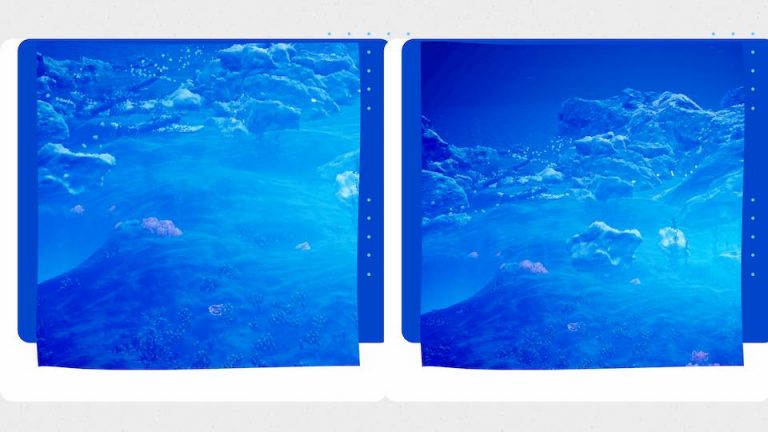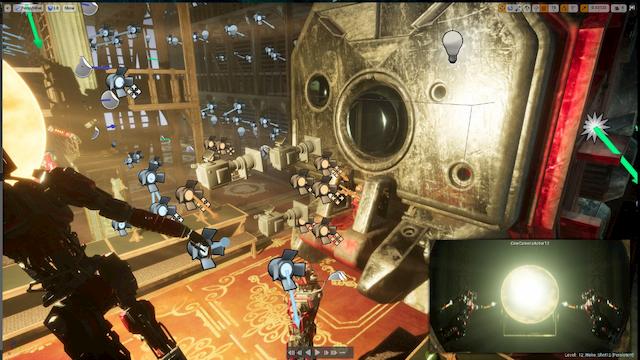In this series we dive deep into using Game Engines for Content Creation and how this workflow is efficient for Pre-Visualization.

3D Rendering is the method with which three-dimensional data is converted into an image. The time taken for this process can vary from seconds to even days based on the amount of data the computer has to process, and this time-frame can even be for a single frame. There are two types of rendering technologies used in the industry these days- real-time and offline rendering.
When we render a scene using an off-line renderer each time there is a small change the system has to re-compile all the changes to produce how the scene will look with them implemented (Popular off-line renderers are Arnold (used in Maya), V-ray, Octane, etc). This change can even be something trivial; for example — changing the color of a light, changing the camera angle, moving a character etc. When it comes to end-to-end production of content changes are very frequent and from these examples, we can see that adopting an off-line render pipeline can add a lot more time to the production cycle. It also gives less room for content creators to iterate sequences and makes the entire process of re-working scenes time-consuming and expensive.
With Real-Time Rendering traditional rendering is replaced with a render engine that can render in real time. This means with real-time rendering, you can have a glance at the end result almost instantly. The advancements in this field have only been possible due to the push that game engines have advocated in recent times (most notable Unreal Engine).This resulting technology has grown a lot that now it not only meets the demands of architectural visualization but also film and television. Production companies use technology in real time to accelerate the creative process and even display the final pixels.
In the scenario below we explain how we were able to provide a base frame for how a scene would look and render out a sequence that can ideally be used in the final stages of production (art is meant only for demonstrative purposes).

The scene blockout lays down the fundamental building blocks and how the scene resonates visually and emphatically. This is the crucial stage to nail down as this represents the base for the entire visualization. Using Unreal Engine we were able to quickly render out a scene and make changes instantly.
With each change we had to do the render time would increase in software’s like Maya as they are not real-time. Basically to achieve the same results an off-line renderer took us a lot more time to render scenes out.
Once the light is build in a real-time engine any change in camera (or object movement) is reflected instantly. This helps scene builders quickly make additional changes to the scene if needed.

The rock in the left image has moved its position in the right image. This doesn’t affect render time or any other scene process. This real-time feedback enables creatives to make changes as they desire without having to wait long periods to see its result.
In the next phase we set the color, tone, and populate the scene to resonate perfectly with the original brief. Here, Artists are free to implement any color scheme without affecting render time to make sure their creative freedom is met . VFX and post-process is also considered here with compromising optimization.

“At TILTLABS, we primarily use Unreal Engine 4 for content creation which involves the process from Pre-Visualization to end production. The ease and flexibility the engine offers has helped streamline our production pipeline without affecting project deadlines” —Nikhil Chandran, C.E.O
As content creation / visualization grows to be an ever-evolving artistic and technological pursuit, traditional pipelines are being overturned due to the timeline involved to pre-visualize and render out sequences.
Using real-time rendering technologies artists now have the freedom to create content exactly the way they want it iteratively, collaboratively while avoiding re-shoots.
- Pipeline is non-linear and encorages a more iterative and collaborative process.
- Real-time rendering solutions can produce high quality assets with real-world physics that can be used even in the final product.
- Decreased render times means professionals don’t have to wait to see their output which would be close to the final result.




Combing all process into a single suite enabled us to iteriate faster avoiding the hassles of a traditional pipeline. By this we were able to bring our artists and developers under one roof and make checks systematically and progressively.
As content creation grows to be an ever-evolving artistic and technological pursuit, traditional pipelines are being overturned due to the timeline involved to pre-visualize and render out sequences. With real-time rendering, ‘what you see is what you get’. Using this technology artists now have the freedom to create content exactly the way they want iteratively, collaboratively while avoiding re-shoots, and without compromising creativity. Every hour of pre-production is worth two hours of production, and Game engines can further be used to create interactive spaces where creators can visualize their intended locations and sets, set camera angles and frame lighting references- essentially blocking out and creating the movie even before production to establish tone and aesthetic so that the end result is exactly the way they want it.

TILTLABS is a product realization company that operates mainly Metaverse, XR & Mobility, Virtual Production, Games & Gamification, Blockchain, and NFT. We specialize in using emerging technologies to create interactive, intuitive, and immersive experiences that really matter.
Ground Floor
Carnival Technopark,
Technopark Campus
Thiruvananthapuram- 695581
Kerala, India
[email protected]
+91 471 4050401
© TILTLABS. All rights reserved